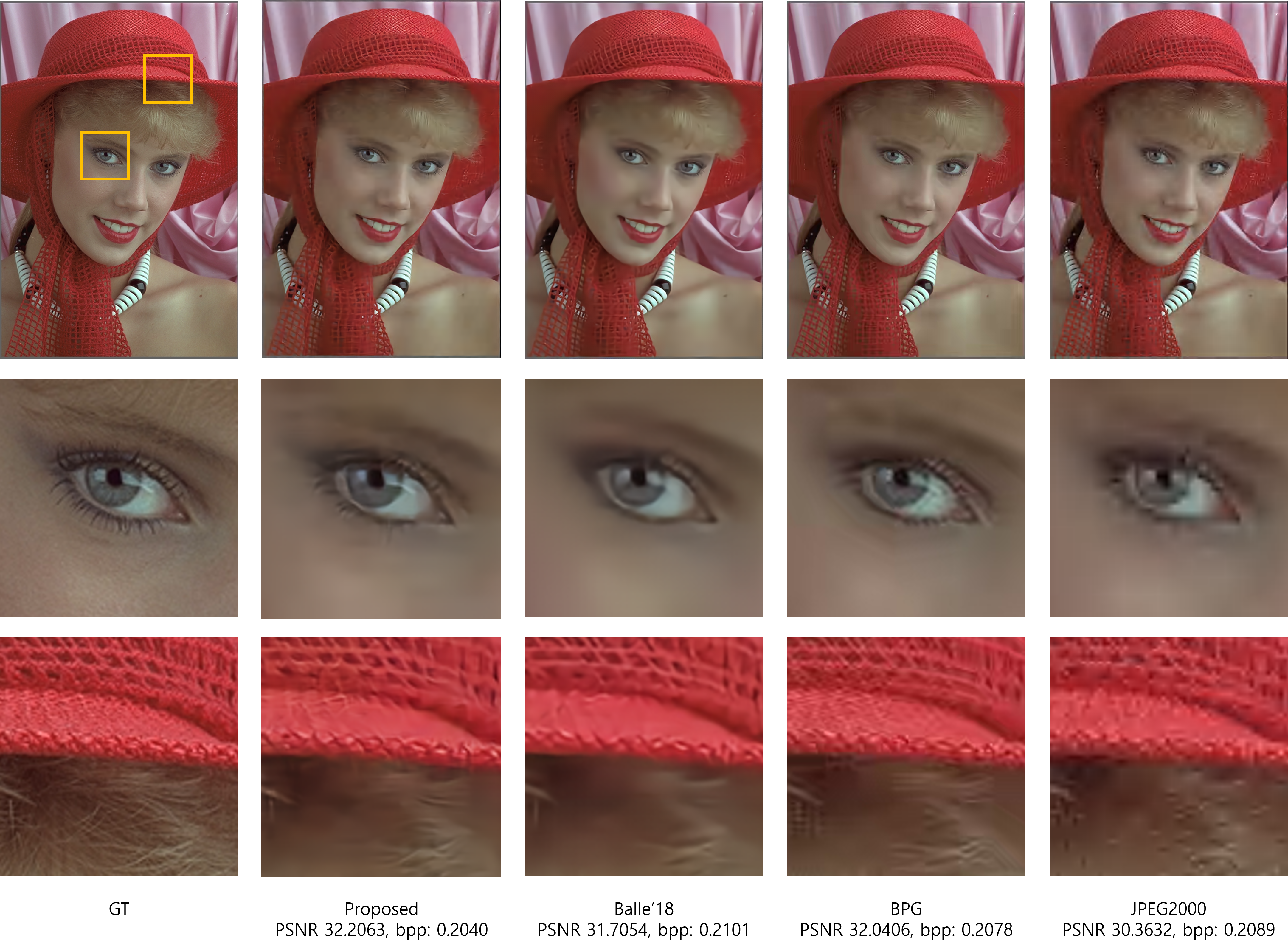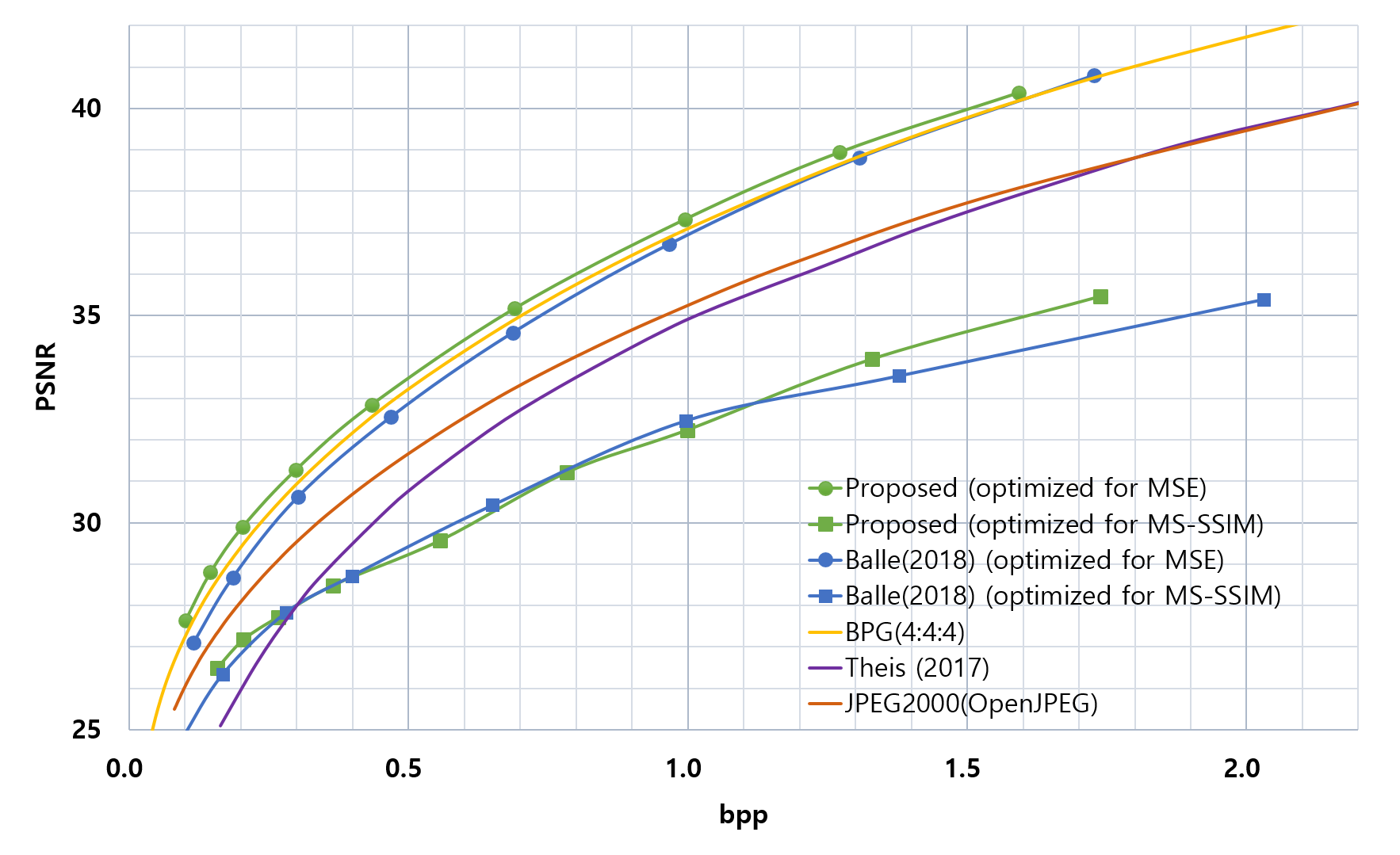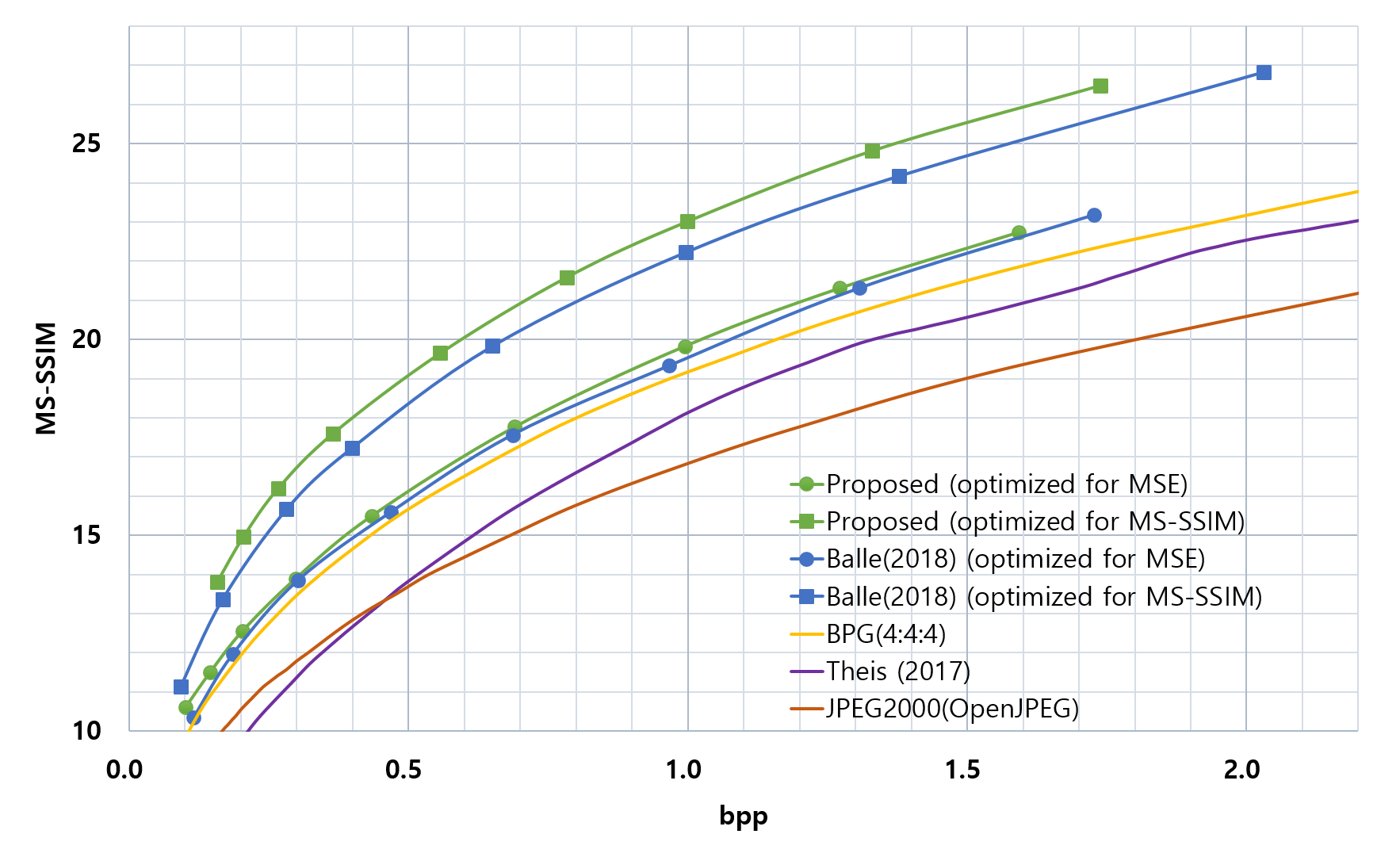Repository of the paper "Context-adaptive Entropy Model for End-to-end Optimized Image Compression"
This repository includes evaluation results, reconstructed images, and test codes of our paper "Context-adaptive Entropy Model for End-to-end Optimized Image Compression". Please refer to the paper for the detailed information.
We optimized the networks with the two different types of distortion terms, one with MSE and the other with MS-SSIM. For each distortion type, the average bits per pixel (BPP) and the distortion, PSNR or MS-SSIM, over 24 PNG images of the Kodak PhotoCD image dataset are measured for each of the nine R-D configurations. Therefore, a total of 18 networks are trained and evaluated. To our best knowledge, this is the first test results of ANN-based image compression which outperform BPG, in terms of PSNR as well as MS-SSIM.
Followings are the rate-distortion curves of the proposed method and competitive methods. The top plot represents PSNR values in consequence of bpp changes, while the bottom plot shows MS-SSIM values in the same manner. Note that MS-SSIM values are converted to decibels for differentiating the quality levels.
The compression gains in terms of BD-rate of PSNR over JPEG2000, Balle'18(MSE-optimized), BPG are 34.08%, 11.87%, 6.85%, respectively. In case of MS-SSIM, we found the wider gaps of 68.82%, 13.93%, 49.68%, respectively.
We provide test codes for evaluating a image compression model proposed in our work "Context-adaptive Entropy Model for End-to-end Optimized Image Compression". The model includes two types of models, base models for low bpp and hybrid models for high bpp.
Python Imaging Library (PIL) is used in our test code. To file the supported formats, please refer to https://pillow.readthedocs.io/en/4.1.x/handbook/image-file-formats.html. PNG and BMP formats including RGB channels have been tested.
-
usage: encode.py [-h] [--model_type {0,1}] [--input_path INPUT_PATH] [--compressed_file_path COMPRESSED_FILE_PATH] [--quality_level {1,2,3,4,5,6,7,8,9}]
-
optional arguments: --model_type {0,1} 0: MSE optimized 1: MS-SSIM optimized --input_path input image path --compressed_file_path target compressed file path --quality_level {1,2,3,4,5,6,7,8,9} quality level from 1 to 9. The higher, the better
-
Sample command for encoding: python encode.py --model_type 0 --input_path ./examples/input_example.png --compressed_file_path ./examples/output.cmp --quality_level 5
-
usage: decode.py [-h] [--compressed_file_path COMPRESSED_FILE_PATH] [--recon_path RECON_PATH]
-
optional arguments: --compressed_file_path input compressed file path --recon_path target reconstructed image path
-
Sample command for decoding: python decode.py --compressed_file_path ./examples/output.cmp --recon_path ./examples/recon_example.png
- When you excute test codes for the first time, it may take a few minutes to download models. Please be patient.
- When HDF5 version error occurs during tests, please try to install HDF5 1.10.1. When you use anaconda environment, you can install it using the following command: conda install -c anaconda hdf5=1.10.1
- Currently test codes spend most of time for arithmetic coding and decoding. We implemented the arithmetic coder that operates with the model parameter such as mu and sigma, based on Nayuki's work. We really appreciate for her great effort. Note that, however, current the model-based arithmetic coder is not fully optimized. If anybody has any idea on it, please let us know.
- Note that the evaluation results in our papaer are not the first results that outperforms BPG. David Minnen et al showed that their model outperforms BPG, a bit earlier than us. We'll revise Our manuscript to correct it soon.


